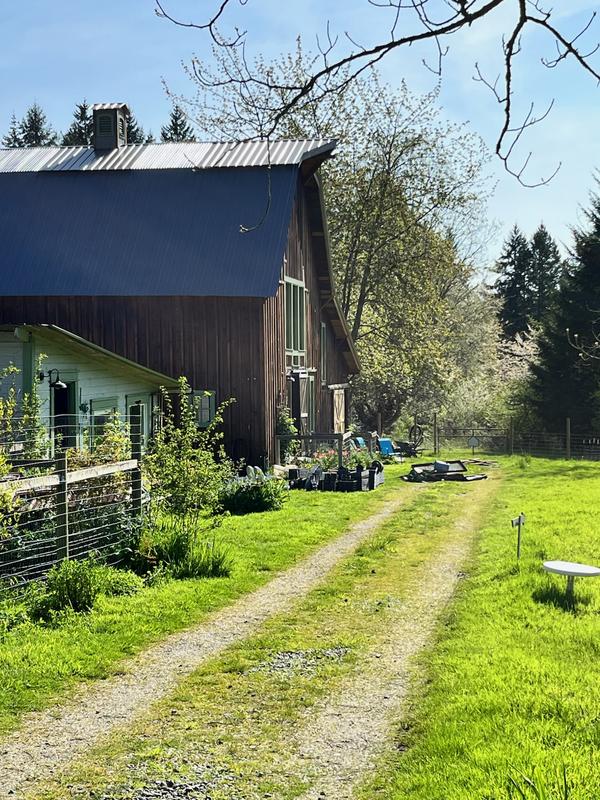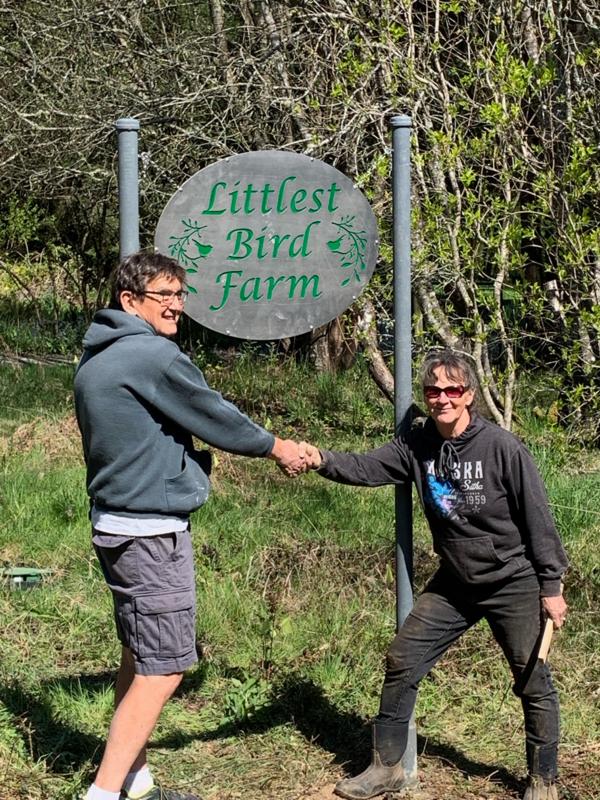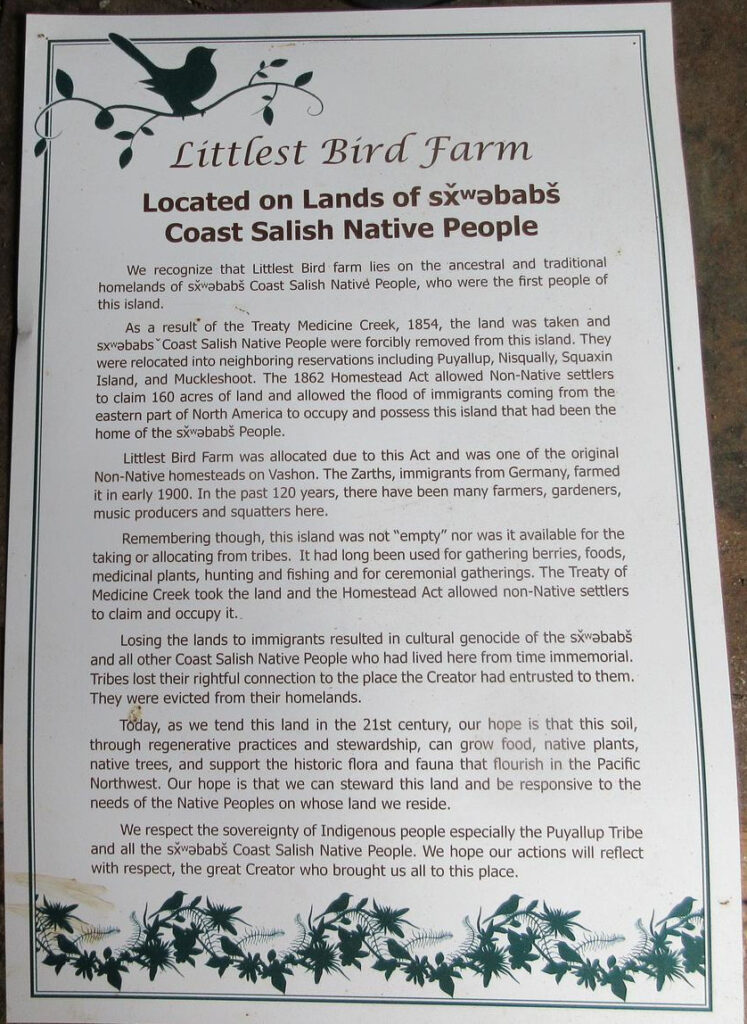
By Andy Valencia
For Kim Kambak, owner of Littlest Bird Farm, her farm is deeply intertwined with a catastrophic event in her life. There was her life before, and then there was how she continued afterward. The latter part happened here on Vashon, as she healed the land and brought it back to life as a farm. In turn, the work of healing the land was also her own therapy.
Kim was born in Oregon into a family with a long tradition of logging. At times she’d sleep right in the logging camp’s kitchen tent, hearing her grandmother get up at 3:30 AM to start preparing the food for the day. If you’ve ever read Ken Kesey’s novel about an Oregon logging family, “Sometimes a Great Notion”, some of its events could have come straight out of Kim’s family history.
With that sort of background, it’s no surprise that Kim worked her way through college by firefighting for the Forest Service. The family tradition continues unbroken; her son also worked for the Forest Service before switching to his current employer, the Bureau of Land Management.
Besides her experiences in rural Oregon – logging, animal husbandry and crop growing – she was also involved in the community aspects of farming. Zoning, Oregon’s all-important “urban growth boundary,” water rights, and even what sorts of chemicals are used to maintain irrigation ditches. Kim’s broad set of skills is married to a fierce spirit of serving the public interest.
This spirit of service showed up when her husband’s Department of Justice job took their family to the Southwest for several years. Kim took a position at a Navajo chapter house. While teaching at the Navajo Head Start program, she became aware of how poorly the foods were chosen for the various nutrition programs. She drove a switch from an overemphasis on dairy to a much healthier diversity of options like rice, beans, maize, polenta, and squash.
Back in Oregon, she resumed her agricultural interests. Her life’s great inflection point came out of nowhere; while on a preparatory ride for a bicycle trip across Canada, she had a catastrophic crash. By the time she was discovered and transported, she had been laying immobile from trauma for hours. Suffering from both physical and neurological injuries, she was trying to regain mobility even as she wrestled with mental tasks sometimes as simple as remembering her own name.
For a time, she lived with her family in the Tacoma area, and those long-established memories seemed to provide an anchor to Kim’s healing path. A friend started sending her real estate listings, and for the first time she heard of the old Zarth farmstead on Vashon. She made an offer – and lost. But the sale fell through, and she was contacted again. Would she buy “as is,” with no cleanup? She said “yes,” and became the owner.
The place was a mess. Innumerable hulks of cars were buried in the wild overgrowth of blackberry. Many years ago, the east end of the Zarth estate had hosted demolition derbies. When a car lost so badly that it would never run again, it was pulled to the side and forgotten. One of Kim’s early tasks was to arrange for all of this to be finally towed away to a wrecking yard.
The house itself was in poor condition. The name of her farm, “Littlest Bird,” comes from the almost total lack of windows. Birds had entered and taken up residence throughout the house. Until the most basic repairs could be completed, Kim lived down the road at the local hostel.
And now she began to heal. On a given day, she’d set out to collect, say, bottle caps. She would work her way across her property, picking up just bottle caps. The next day, it might be glass. Her mind was tracing the shape of her new farmland even as her efforts added to its order and beauty. Out there in nature, her mind healed even as she did her work of the day.

A century-old barn, built from old-growth cedar, had held up well to its neglect. Kim cleaned it up, and it’s now a beautiful, open space that has been used as a child play space as well as a venue for art showings. There are still posters and art boards, signs of all the decades of activities it hosted in the past, now joined by a new generation of events.
The farm is healed, and Kim is as well. She can be found at the farmer’s market, selling products fresh off her farm. You can also ask her about on-site sales, especially items like meat, which can only be sold this way. If she isn’t too busy, you might even request a tour.
What does she want from the community? In Kim style, nothing for herself. She hopes more people can learn to grow, whether it’s a planter on a balcony or a patch of ground near your house. If you get stuck, she can probably tell you how to get it fixed.

Postscript: In reviewing this article, Kim’s only complaint was that it didn’t mention the many people who helped her. She noted in particular the Sherman family; John continues to provide invaluable help. The web version of this article includes her land acknowledgment.

